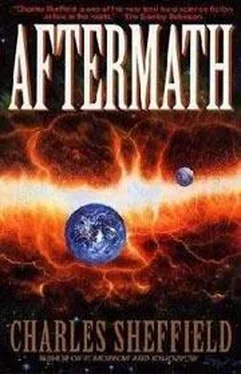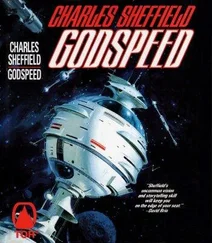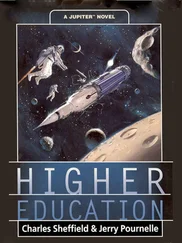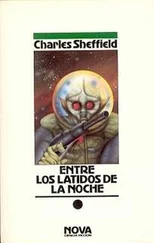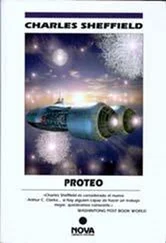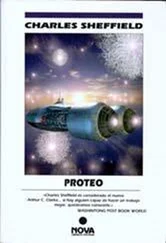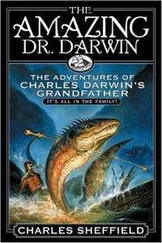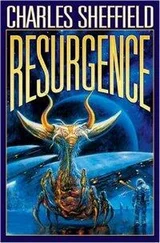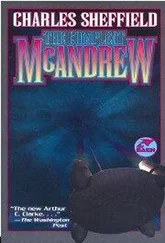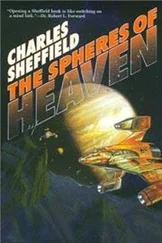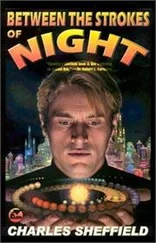“Are you going to tell me?” I said after a while. I was still scooping up snow, quietly, and transferring it to my burning mouth.
“I’m going to trade with you. You tell me what I need to know, I tell you stuff.” He still held the knife, but now he was using it to shave thin slices from a piece of cooked ham. “Before we start, just so you don’t get a wrong notion in your noggin, I’ll tell you the deal. I know what’s been goin’ on in the world for the past six years. You have no idea. You’re also in bad shape physically. For all we know, the next few days you fall down in a fit or burn up in a fever. S’pose you need help an’ I’m not here to give it. What you gonna do? Go to some house an’ ask? I don’t think so. They find out who you are, Dr. Oliver Guest the famous child murderer, they run screamin’ or they turn you in. I won’t do that. You may not believe it, but you need me as much as I need you.”
I realized there was important information in that statement, though I was not yet in a position to assess fully its significance.
“I didn’t know that you did need me,” I said.
“I do. We do. But don’t kid yourself. If I have to, I’ll gut an’ flay you.”
Anyone from my former life could have told Seth that it was not wise to make jokes at my expense. I am a person who takes himself seriously. However, I did not judge that he was joking. My uncouth West Virginia companion was deadly serious.
Caveat, Doctor. I would be very careful.
“You first,” he said. “Talk. Tell me all about telomod therapy.”
“ All? The subject has evolved over many years of research.”
“Gimme the highlights, then. We got lots of time, and I’m in no hurry. Talk.”
“Where should I begin?”
“Assume I don’t know a thing.” He presented me with a handful of greasy ham shavings and a piece of dry bread. “I was a businessman, not a scientist.”
This was a businessman, this crude and dangerous ruffian? No. He was a businessman. And now?
In a world apparently gone mad, a little more insanity made no difference.
“Almost every cell in your body has forty-six long strands of DNA called chromosomes,” I said. “Do you understand so far?”
A nod. “Keep goin’. If I want backup explanation I’ll tell you.”
“When a body cell divides, the double helix of the DNA unwinds. One spiral goes in one direction, the other in the opposite direction. When the process is finished, in place of the original double spiral we have two identical double spirals. The cell can now divide to give two daughter cells.”
I paused. Something odd was happening to my body. Tingling had begun in my extremities, suggesting that the process of awakening still had a long way to go. And, more disturbing, there was tightness in my chest. It would be an awful irony to waken from half a decade of judicial sleep only in order to have a heart attack and die.
Seth said, “Get on with it, Doc. We don’t have all day.”
So much for sympathy and tender loving care. I forced myself to take a deeper breath.
“The cellular division process is neat, efficient, and I would say beautiful. But there is a complication. During the copying, the very end of a chromosome is not duplicated. So with each cell division, the chromosomes gradually shorten. That should mean gradual loss of genetic material, but one thing saves us: the actual ends of each chromosome do not contain genetic material. Instead, they have a repeating pattern of molecules called a telomere. The telomeres contain no part of the genetic code. They are there only to protect the true genetic material. On each cell division, the telomeres shorten. When they are reduced to a certain point, the cell can no longer divide.”
I looked at West Virginia Seth, who hardly seemed to be listening. “Do you already know some of this?”
“Know all of it.” He grinned at me again. “No offense, Doc, but I have to check you out. You been asleep for six years. For the past two weeks, your life-support system’s been a piece of junk. How’m I to know if your brain’s what it used to be, ’cept by askin’ you things I already know?”
He was right. It was the age-old conundrum: How do I know that the ’me’ who wakes after a night’s sleep is the same ’me’ who went to bed? I don’t. I merely employ it as a working assumption, for lack of anything better. But after a sleep of six years?
I thought of my treasures, locked away in their hidden store. They might not have survived for six hundred years, but six years was a near certainty. I felt my breath quicken. In one way at least, the essential I remained unchanged.
Seth had been studying my face closely. Too closely. I reminded myself that crudeness and barbaric behavior do not necessarily imply lack of intelligence.
He waved the knife at me. “If you’re all done dreaming, get on with it.”
The incongruity of it. A lecture on the basics of telomod therapy, facing a snowy landscape under a sky of pale blue, in a changed world about which I knew little or nothing. Seth might be lying about the last point, but his appearance and my own premature resurrection inclined me to believe him.
“Since the telomeres shorten on cell division,” I said, “that should be the end of the story. It isn’t. There is an enzyme called telomerase that rebuilds telomeres. In humans, telomerase is found mainly in two types of cells. The first kind is the germ cells, so every fertilized egg begins its division with full-length telomeres. The second kind is cancer cells. Almost all cancer cells contain telomerase. That’s how they can reproduce indefinitely, until they overwhelm and kill the host.”
Again I was forced to pause. My breathing was easier, but now I had no feeling in my hands — no body sense that they were even there. My arms seemed to end at the wrists.
Seth was glaring at me again. It was pointless to tell him of my woes. I forced myself to continue.
“Telomod therapy for cancer, which is what you had” — I was guessing, but he did not contradict me — “ is a delicate balance. First, a patient is treated with a telomerase inhibitor. The cancer cells continue to reproduce rapidly, but their telomeres shorten with each division. When the telomeres are gone, the cells die. The cancer dies. The patient, assuming that the telomerase inhibitor was suitably applied, does not die.”
“Not quite.” Seth stared out across the peaceful river. “He gets real damn close.”
I could have made a grab for the knife, sitting on the concrete block. I had more sense than to try. Thus far the information transfer had been almost all one way.
“The treatment is unpleasant,” I said, “but consider the alternative. And there are possible compensations beyond the obvious benison of a cancer cure. If a patient were simply treated with telomerase inhibitor, death would soon follow. Every telomere in every cell would shorten, until the cells reached the Hayflick limit and could no longer give viable daughter cells. You would age rapidly, you would die.”
“That’s what the Institute told us. Telomeres shorten, I’m a goner. But there’s a way out, right?”
“At least in principle. Assuming that the delicate point is reached where the cancer is dead and the patient is not, a telomerase stimulator is administered. The body’s cells have their telomeres restored to their original, juvenile length. Naturally, nothing can be done to restore dead cells; but the patient is in a very real sense rejuvenated. Of course, you now face the possibility of new cancer. Telomod therapy must juggle telomerase inhibition and stimulation, in a manner different for each patient. It is not clear what the life expectancy of a patient given such treatment might be.” I stared at Seth. “At least, we did not know at the time of my descent into judicial sleep.”
Читать дальше
